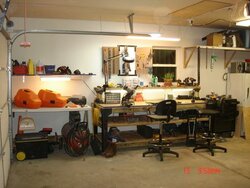I recently got an Efco grinder (similar to the oregon 511).
I have the basics down and have done a few chains with good results.
Any good tips you long time grinder users can give to us newbies?
What's the goal with a dressing stone?
Since this grinder only "cuts" from one side of the wheel, should I flip the wheel over in the grinder after X number of chains to cut from the other side so it wears evenly?
Thanks guys.
I have the basics down and have done a few chains with good results.
Any good tips you long time grinder users can give to us newbies?
What's the goal with a dressing stone?
Since this grinder only "cuts" from one side of the wheel, should I flip the wheel over in the grinder after X number of chains to cut from the other side so it wears evenly?
Thanks guys.


